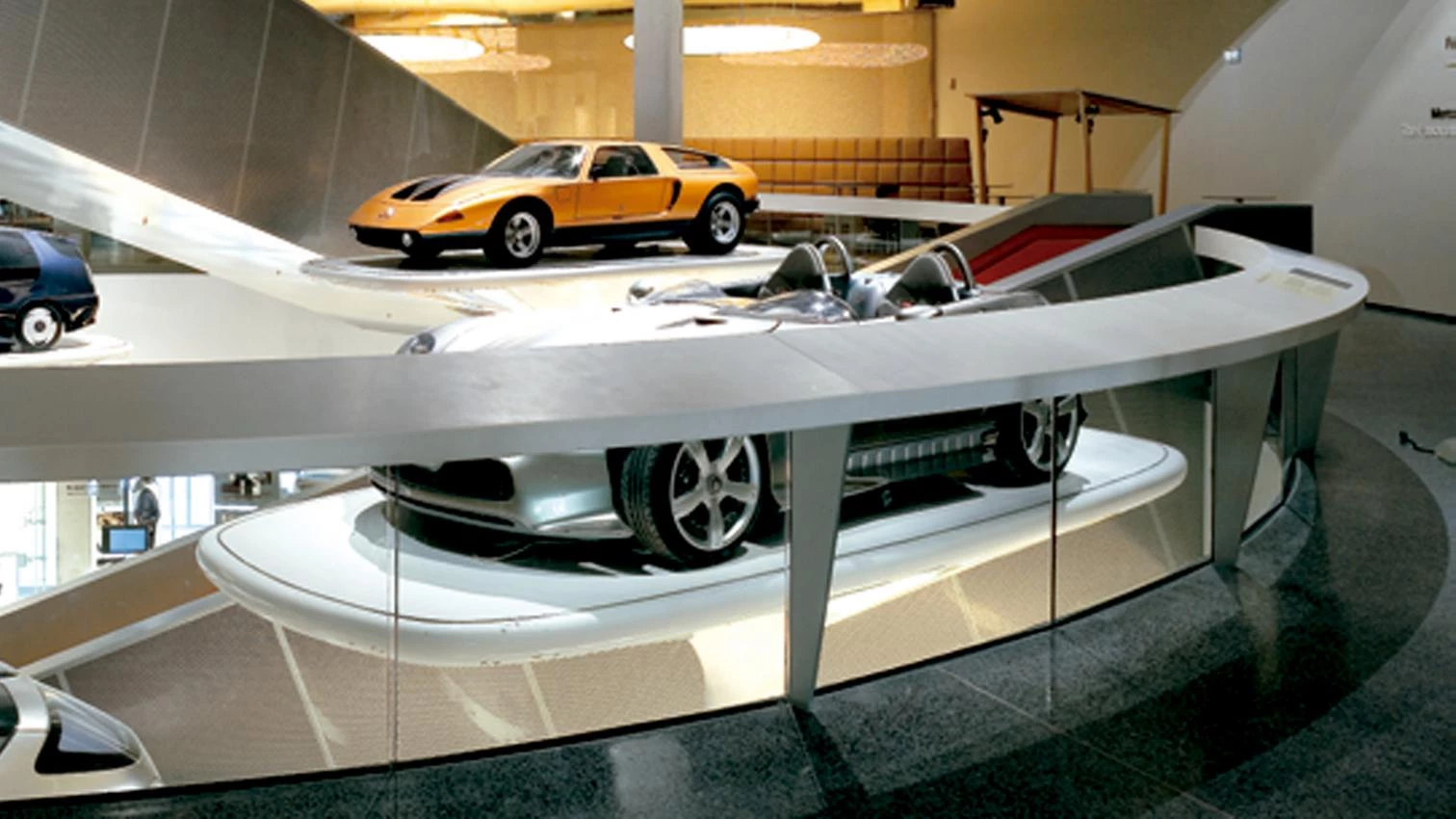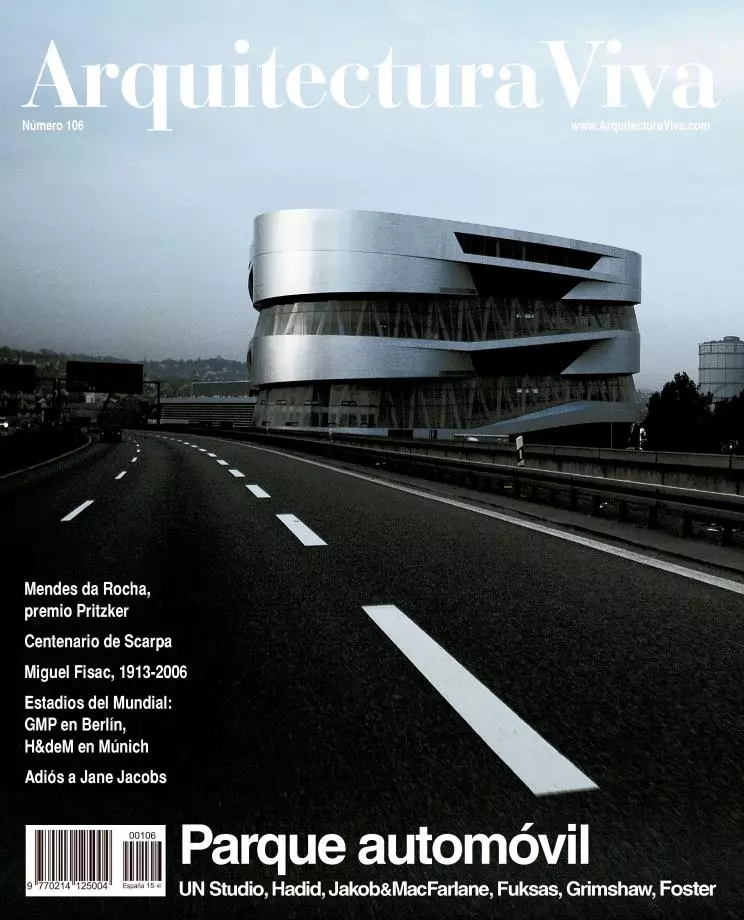
The automobile and architecture make an odd couple. Though their mutual esteem is evident, the members of this mixed marriage are of such opposite nature that the fruits of their close relationship shall necessarily have a hybrid character. On the one hand, a fast and light machine, whose form obeys to kinetic laws; on the other, a motionless and heavy construction, whose shape is subjected to stubborn gravity: nothing as unlikely as the fascinated attraction between movement and permanence. However, the internal combustion engine radically changed the territory, and the urban or suburban mutation generated by this fertilization found its symbolic echo in buildings that rose swift and mechanical. The passion between architecture and the car shaped the landscape of modernity, and the world today seems indeed inconceivable without this implausible crossbreeding, product at once of necessity and of chance.
In this fortunate or chimerical union, the vehicle has always been the lead singer. Beyond the works devoted to it proper – from factories to high-rise garages, as well as highways and gas stations –, the automobile changed architecture waving the bait of mass production in front of an old lady anchored in the routines of a timeless tradition, and tempting with the dream of industry a still largely handcrafted construction, yet eager to standardize both its processes and its products. From the first decades of the past century, architecture has endeavored to learn from the automobile, and the latter has often presented its latest models against the backdrop of recent buildings, orchestrating bodyworks and constructions in a concert of seduction and desire: after teaching the lesson of the assembly line, the automobile would show architecture the decisive importance of advertising in the demanding market of buildings or machines.
Always with delay, the shift from the succinct functionalism of the Ford T to the fanciful design of the Chryslers had its architectural equivalent in the transition from rationalist modernity to the fickle forms of kind opulence and consumer postmodernity, and it is with this same décalage that we now await the influence of the motor world in architectural projects. If the transfer of ideas experienced in the past between the two members of this odd couple finally materializes, we can expect the current effort of the automobile industry to produce more efficient and less contaminating vehicles to have its reflection in buildings more conscious of their ecological impact in the use of materials and energy, as well as in global warming. It would be a fertile fruit of this hybrid union, and perhaps the built version of the Toyota Prius should deserve to write a new chapter of the romance that began at the Ford factory.





